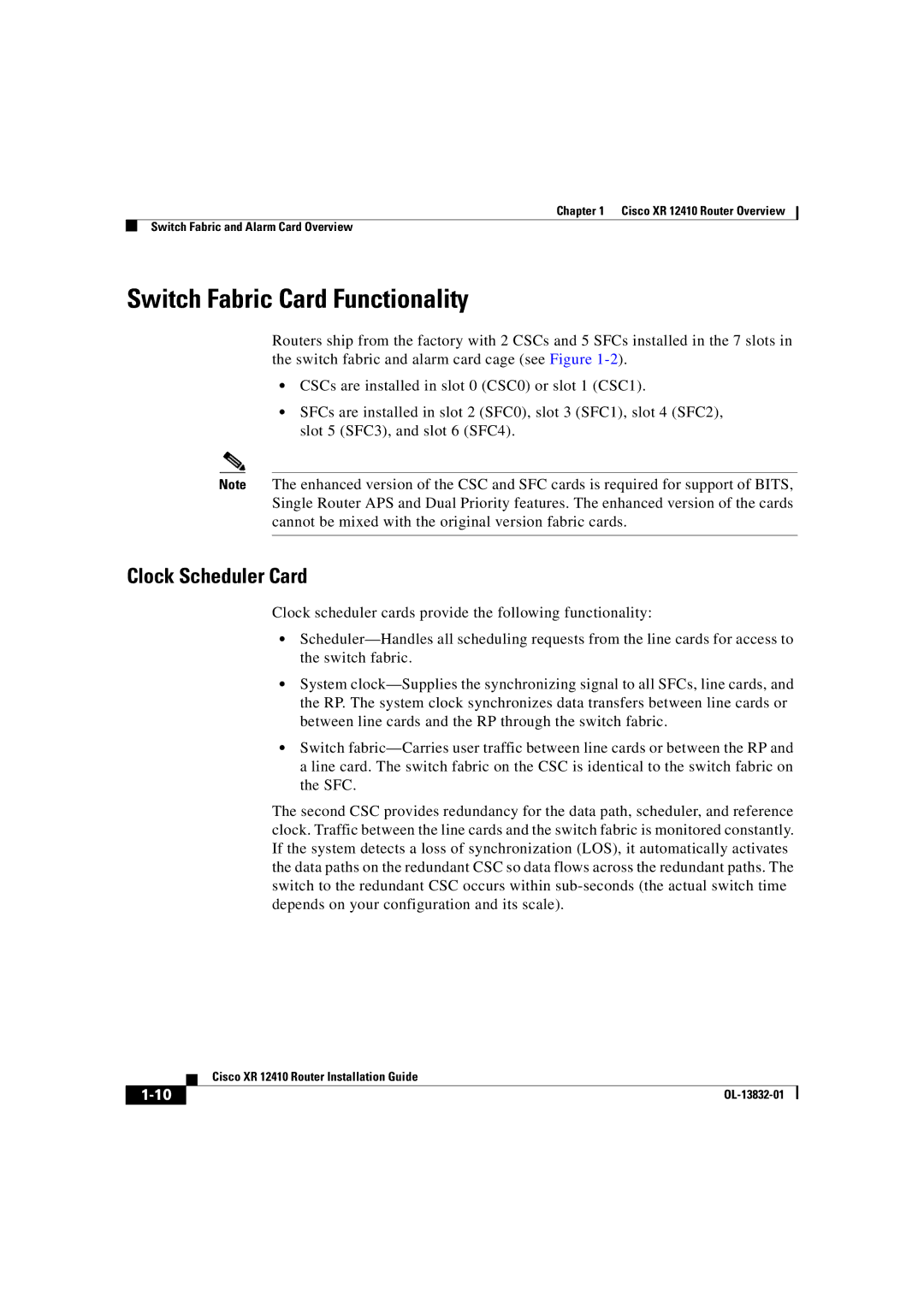
Chapter 1 Cisco XR 12410 Router Overview
Switch Fabric and Alarm Card Overview
Switch Fabric Card Functionality
Routers ship from the factory with 2 CSCs and 5 SFCs installed in the 7 slots in the switch fabric and alarm card cage (see Figure
•CSCs are installed in slot 0 (CSC0) or slot 1 (CSC1).
•SFCs are installed in slot 2 (SFC0), slot 3 (SFC1), slot 4 (SFC2), slot 5 (SFC3), and slot 6 (SFC4).
Note The enhanced version of the CSC and SFC cards is required for support of BITS, Single Router APS and Dual Priority features. The enhanced version of the cards cannot be mixed with the original version fabric cards.
Clock Scheduler Card
Clock scheduler cards provide the following functionality:
•
•System
•Switch
The second CSC provides redundancy for the data path, scheduler, and reference clock. Traffic between the line cards and the switch fabric is monitored constantly. If the system detects a loss of synchronization (LOS), it automatically activates the data paths on the redundant CSC so data flows across the redundant paths. The switch to the redundant CSC occurs within
| Cisco XR 12410 Router Installation Guide |
